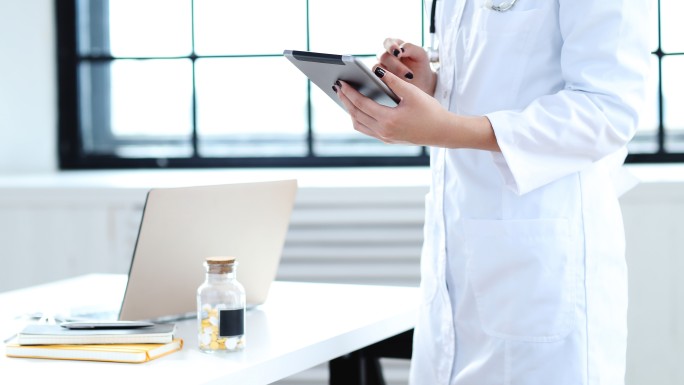Benefits of Health Information Exchange: Why Is HIE useful For Patient
Have you ever scrambled to remember medication names during a doctor's visit, or worried about duplicate tests at a new specialist? Imagine a healthcare system where your complete medical history follows you seamlessly, regardless of where you receive care. This is the vision of Health Information Exchange (HIE), a secure network revolutionizing patient care.
In this blog post, we'll explore the benefits of health information exchange for patients and providers.
I. What Is The Health Information Exchange
Health Information Exchange (HIE) is a system that allows healthcare professionals and organizations to electronically share and access patient medical information securely. It enables the exchange of crucial health data such as medical history, laboratory results, medication lists, allergies, and diagnostic images among different healthcare providers, healthcare systems, and other authorized entities involved in patient care.
HIE systems typically use secure electronic networks and standardized protocols to ensure the confidentiality, integrity, and availability of patient data and FHIR is one of the most popular standards frameworks for exchanging healthcare information.
These systems enable healthcare providers to retrieve relevant patient information quickly and securely, enhancing communication and collaboration among members of the healthcare team. One of the most popular standards frameworks for exchanging healthcare information is FHIR.
II. Benefits of Health Information Exchange
Improved Patient Safety and Reduced Errors
One of the most significant advantages of health information exchange is its potential to enhance patient safety. With a comprehensive view of a patient's medical history, doctors can:
- Reduce medication errors: By having access to a complete medication list, including prescriptions from other providers, doctors can avoid prescribing drugs that could interact poorly or be contraindicated based on a patient's allergies.

- Prevent duplicate testing: HIE eliminates the need for repeated tests, minimizing unnecessary costs and radiation exposure for patients.
- Catch potential complications: A complete medical picture allows doctors to identify potential drug interactions, underlying conditions, or risk factors that could complicate treatment plans.
This improved access to information translates to better-informed decisions and ultimately, safer care for patients.
Enhanced Care Coordination and Communication
HIE fosters a more collaborative approach to healthcare. When multiple providers involved in a patient's care can easily share information, it leads to:
- Improved continuity of care: Doctors can pick up where other providers left off, ensuring a smooth transition between different healthcare settings.
- More informed treatment plans: Specialists can have a holistic understanding of a patient's health when previous medical records are readily available.
- Better communication with patients: With a shared understanding of a patient's medical history, both doctors and patients can collaborate more effectively on treatment goals and plans.
HIE empowers patients to be active participants in their healthcare journey, leading to more informed decisions and improved health outcomes.
Increased Efficiency and Reduced Costs
Another reason why HIE is useful is it streamlines administrative processes within the healthcare system, leading to significant cost savings. Here's how:
- Reduced paperwork: HIE eliminates the need for patients to fill out repetitive medical history forms, saving time and resources for both patients and providers.
- Elimination of duplicate testing: As mentioned earlier, HIE reduces unnecessary tests, saving money and minimizing patient discomfort.
- Improved billing accuracy: Complete and accurate patient records facilitate more efficient billing and insurance claim processing.
These efficiencies translate to lower healthcare costs for everyone involved.
Public Health Benefits and Improved Population Health Management
HIE plays a crucial role in safeguarding public health by:
- Facilitating disease outbreak monitoring: HIE can help public health officials track and contain the spread of infectious diseases by identifying patterns and trends in patient data.

- Improving chronic disease management: By enabling better coordination of care between primary care providers and specialists, HIE can contribute to improved control of chronic conditions like diabetes and heart disease.
- Enhancing immunization tracking: HIE can streamline immunization programs by ensuring that patients receive appropriate vaccinations and eliminating unnecessary repeats.
By empowering public health officials with better data, HIE contributes to a healthier population overall.
Patient Empowerment and Engagement
HIE can be a powerful tool for patient empowerment. Here's how:
- Increased access to medical records: With HIE, patients can have easier access to their complete medical history, enabling them to be more involved in their care decisions.
- Improved communication with providers: HIE facilitates a more open flow of information between patients and providers, leading to a more collaborative healthcare experience.
- Enhanced self-management of chronic conditions: By having access to their health data, patients can better manage chronic conditions through medication tracking and adherence to treatment plans.
HIE empowers patients to take control of their health and become active partners in their well-being.
III. Challenges and Considerations
However, implementing Health Information Exchange (HIE) presents several challenges and considerations that healthcare organizations must address to ensure its successful adoption and utilization. Some of these challenges include:
Interoperability: Achieving interoperability between different healthcare systems and electronic health record (EHR) platforms remains a significant challenge. Variations in data formats, standards, and protocols can hinder the seamless exchange of health information, requiring healthcare organizations to invest in interoperability solutions and standardization efforts.
Data Security and Privacy: Protecting the security and privacy of patient health information exchanged through HIE is paramount. Healthcare organizations must implement robust security measures, encryption protocols, and access controls to safeguard sensitive data against unauthorized access, breaches, and cyber threats. Compliance with privacy regulations such as HIPAA adds complexity to HIE implementations and requires ongoing vigilance to maintain compliance.
Patient Consent and Opt-Out: Balancing the need for data exchange with patient privacy preferences and consent requirements presents a challenge for HIE initiatives. Healthcare organizations must establish clear policies and procedures for obtaining patient consent, managing consent preferences, and honoring opt-out requests while ensuring that necessary information is accessible for care delivery.
Data Governance and Quality: Ensuring the accuracy, completeness, and integrity of health data exchanged through HIE is essential for supporting clinical decision-making and patient care. Healthcare organizations must establish robust data governance frameworks, data validation processes, and data quality standards to maintain the reliability and trustworthiness of exchanged data.
IV. Conclusion
In conclusion, Health Information Exchange (HIE) stands as a transformative force in modern healthcare, offering unprecedented opportunities to improve patient care, enhance clinical decision-making, and drive healthcare innovation. Despite the challenges and considerations involved in implementing and sustaining HIE initiatives, the potential benefits are immense.
By addressing challenges, fostering collaboration, and leveraging HIE to its full potential, we can unlock new possibilities for advancing healthcare quality, efficiency, and patient satisfaction. Together, let us embark on this journey toward a future where Health Information Exchange revolutionizes healthcare delivery and transforms the lives of patients worldwide.
See also:





